Ljubljana Old Town, here’s what to see
A visit to Ljubljana takes about a day, wandering through its alleys and visiting shops in its charming old town. Here’s what to see in this city.
If you arrive by car, we suggest parking in one of the two parking garages located to the north of the city, which are the closest to the old town.
It’s important to memorise the garage you’ve chosen (check your ticket) and the pedestrian exit. The garage is not very well signposted and could be difficult to find on your return.
Prešeren Square
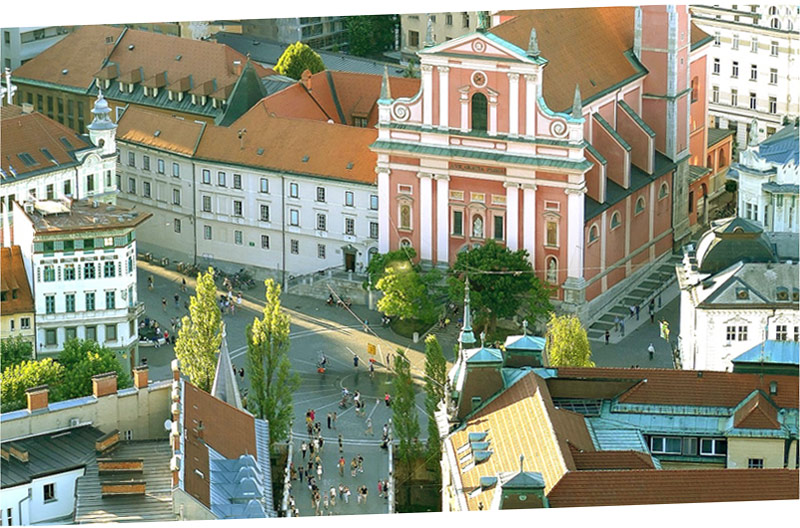
1 – Prešeren Square Prešeren Square developed from a medieval crossroads located in front of the entrance to the walled city. Over the centuries, the square has undergone numerous transformations, the latest one following the devastating earthquake of 1895.
In the centre of the square stands the statue of France Prešeren, the famous Slovenian poet. The monument depicts him with a muse who holds a laurel branch above him, symbolising poetic inspiration and glory.
Triple Bridge
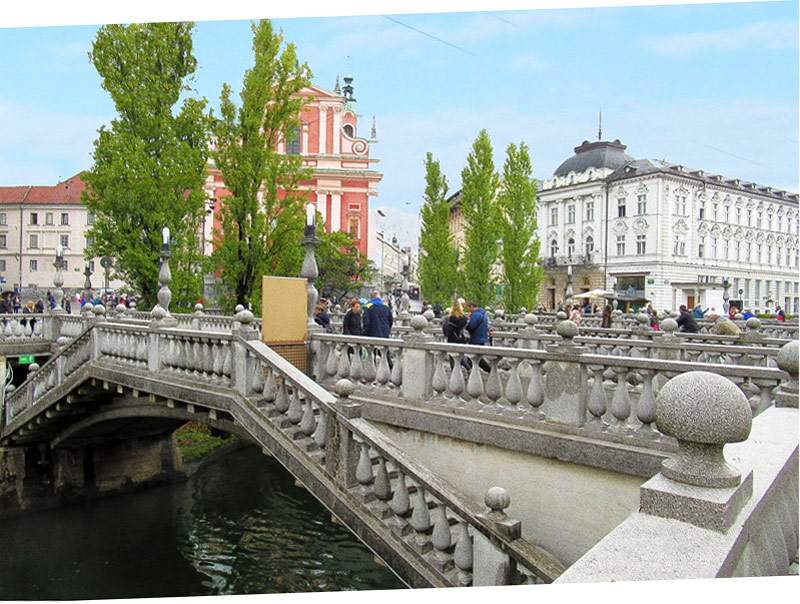
2 – Tromostovje is an elegant bridge that serves as access to the Old Town, built in 1842. Initially, it was a single-arched stone bridge, known to everyone as Špitalski Most (Hospital Bridge).
Between 1929 and 1932, two additional pedestrian bridges were added on either side of the existing one to meet traffic needs. At that time, the metal railing of the central bridge was removed, and the three bridges were fitted with sturdy stone balustrades.
Today, the Triple Bridge is fully pedestrianized and serves as a pleasant walk and a meeting point in the heart of the historic centre.
Butchers’ Bridge

3 – Mesarski Most is known in Ljubljana as the “Bridge of Love”. Here, countless lovers have symbolically locked their love, throwing the keys into the Ljubljanica River flowing beneath it.
Built in 2010, it is located in the heart of the market, where the butcher stalls can be found. The bridge is adorned with sculptures that symbolise this profession in an original way. The contrast between the eerie sculptures and the “love locks” creates a particularly macabre and bizarre atmosphere.
Dragon Bridge
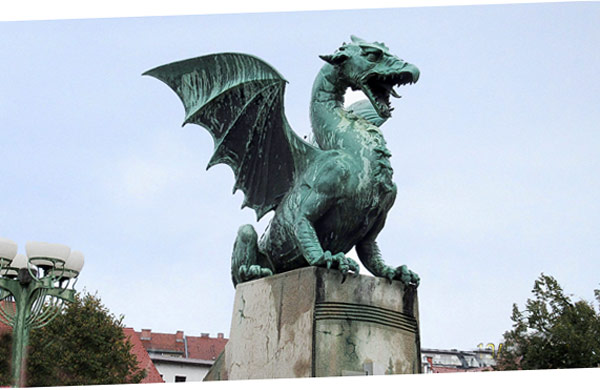
4 – Zmajski Most, the Dragon Bridge, is one of the most iconic symbols of Ljubljana.
The old wooden bridge, now deteriorated, was rebuilt in reinforced concrete at the beginning of the 20th century, a masterpiece of engineering for its time.
Here, the dragon is not a threatening figure, but rather a protective guardian, and it’s no coincidence that it represents the city itself.
As early as the Middle Ages, the dragon appeared on the city’s coat of arms, pointing to its probable origins.
Central Market

5 – Central Market. This market is the favourite meeting place for Ljubljana’s residents, especially on Saturdays, when the stalls multiply and offer a wide selection of local specialties.
Next to the open-air market is the characteristic covered market, which stretches along the river with a row of small shops.
Here, you can buy and taste delicious regional delicacies.
Opening hours are Monday to Friday, from 6 AM to 6 PM, and on Saturdays from 6 AM to 4 PM. In winter, the market closes at 4 PM, while on Sundays and public holidays, it remains closed.
St. Nicholas Cathedral
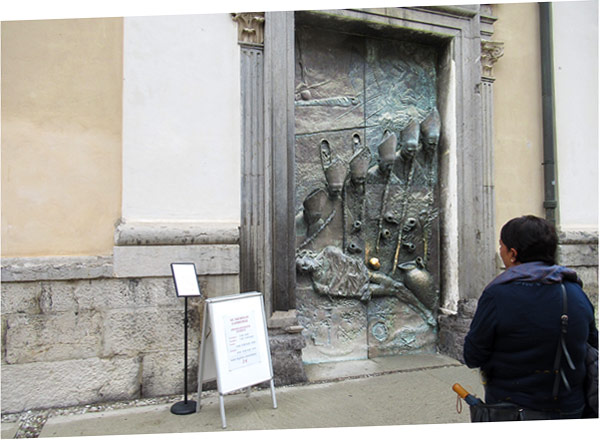
6 – Katedrala Sv. Nikolaj, dedicated to the patron saint of fishermen, dates back to the early 18th century and is distinguished by its twin bell towers. The cathedral consists of a single central nave, side chapels, and a transept topped by a dome.
The interior, decorated in pink marble with white and gold stuccoes, features paintings depicting episodes from the life of Saint Nicholas. Of particular value are the sculptures of the four bishops, the angels of the Corpus Domini altar, and the carved seats reserved for the clergy.
In 1996, during the visit of Pope John Paul II, two extraordinary bronze portals were added. The main door celebrates 1250 years of Christianity in Slovenia, while the side door depicts the sacrifice of Christ and the history of the Diocese of Ljubljana, represented through the effigies of its bishops.
(Admission fee applies)
Town Square
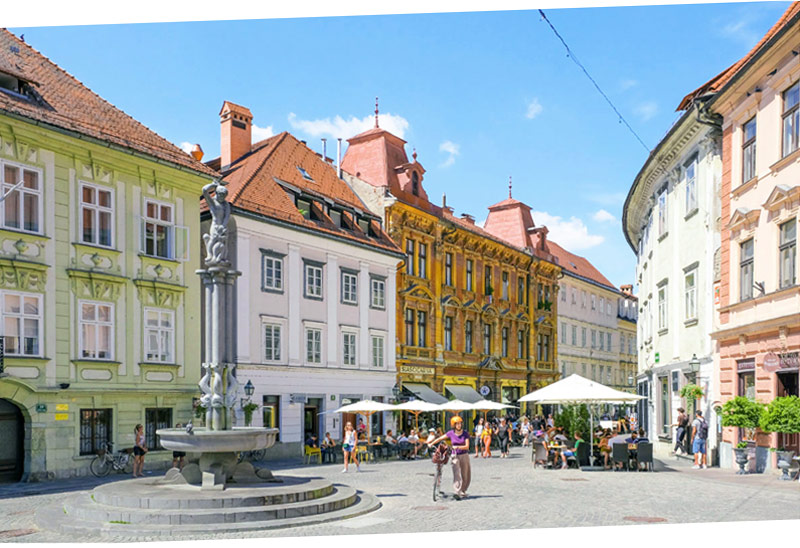
7 – Mestni Trg, known as Town Square, is a place with a strong Baroque character, thanks to the buildings rebuilt after the 1511 earthquake. Dominating the square is the majestic Town Hall, topped with a tower and clock, and in its courtyard, there is a small fountain where, according to tradition, Narcissus gazed at his own reflection.
In front of the Town Hall stands a fountain with an obelisk, adorned with three figures holding large vases from which water flows. These figures likely symbolize the three regions of Carniola, while the steps at the base evoke the mountains of the region.
Old Town

8 – Along Stari Trg and up to Gornji Trg, you can explore the old part of Ljubljana. It is the historic heart and one of the most picturesque spots in the Slovenian capital.
Stari Trg is a charming pedestrian street, lined with elegant baroque buildings and well-preserved medieval houses.
As you continue towards Gornji Trg, the atmosphere becomes even quieter and more enchanting. Here, the streets grow narrower and steeper, as the square nears the hill of Ljubljana Castle.
Together, these two streets form the soul of Ljubljana’s Old Town, with a romantic and authentic atmosphere, where you can discover ancient workshops and admire the architecture of a city that has managed to preserve its history.
Along the River

9 – Cankarjevo Nabrežje is one of the most picturesque and lively spots in Ljubljana, filled with numerous bars, pubs, and restaurants that make it the vibrant heart of the nightlife, yet it is lively and frequented at all hours of the day.
There are many places where you can enjoy a wide range of specialties.
Ljubljana Castle
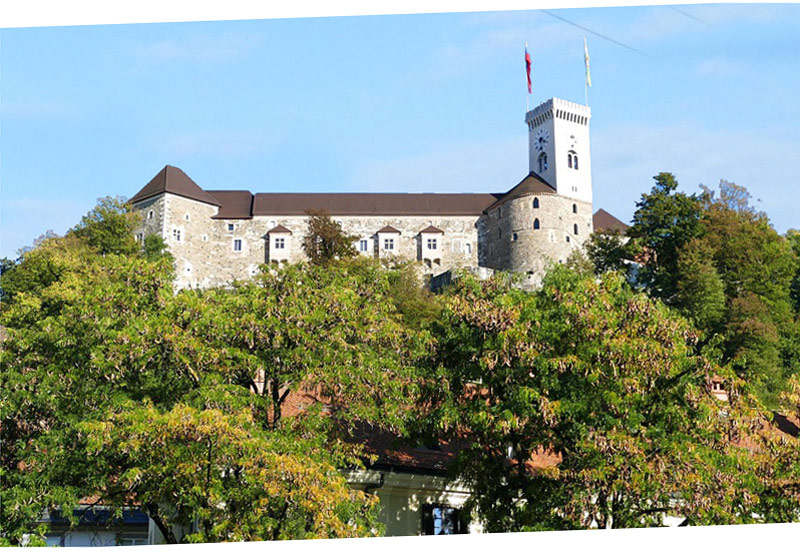
10 – Ljubljana Castle can be reached on foot via several trails that start from the city centre, or by funicular from Krekov Trg.
The interior of the castle is open for visits every day for a fee, but the hours vary depending on the season, while the walk along the outer walls is free.
The first fortifications were built in the 12th century, when the castle was a defensive structure to protect the city and its surroundings. In the 15th century, under the Habsburg rule, it was expanded and transformed into a Renaissance fortress to defend against Ottoman invasions and attacks by rebellious peasants.
Over the centuries, the castle has served various purposes: as a residence for governors, a military base, and, in the 19th century, a prison. During the 20th century, it fell into decline until it was restored in the 1960s and 1970s. Today, after a major restoration, it is one of the main symbols of Ljubljana.

